Proton hasn’t really had a good track record at building a small car. In its nearly 30 years of existence, it actually only made two. The Tiara, launched in 1996, was based on the ageing Citroën AX (which by then was already reaching its 10th year on the market) and was saddled with the usual French reliability problems. The car was discontinued after just four years due to low demand.
Looking to right those wrongs, the company introduced the Savvy in 2005 (famously, it was launched barely a month after the Perodua Myvi, which went on to become Malaysia’s most popular car). Proton spent a great deal of effort to banish its reputation of poor quality with this car – even going so far as to getting the Savvy audited by the TÜV Rheinland Group – but hobbled it by failing to provide a proper automatic option, as the sole self-shifting ‘box was a Renault-sourced automated manual transmission.
Since then, Proton has pretty much stayed off Perodua’s turf, a domain Malaysia’s second national carmaker dominated from the start. Sure, there is the Saga, which sells at under the RM50k mark. But it’s a sedan, and the prices it commands straddle between those of the Axia and the Myvi.
But now there’s the new Proton Iriz, developed and priced squarely to compete against the Myvi in both specs and price. It’s hard not to be impressed by the company’s ambitions – the car has apparently been benchmarked against the Ford Fiesta and the VW Polo, the latter in particular in terms of build quality. But does it all add up? We take a (very) short drive on the roads near the Tanjung Malim plant to find out.
First of, it’s a looker, isn’t it, the Iriz? Certainly, the large, swept back projector headlamps and gaping lower grille will give it oodles of road presence, while at the side, the steeply-rising beltline is echoed by the “dynamic” shoulder line and the lower “side blades”, contributing to a wedge-shaped profile. The rear of the car is probably its most distinctive (and perhaps controversial) aspect, with slim, tall LED combination tail lights set into a “chamfered” section.
As a whole, it’s an edgy, well-proportioned design, with just enough character to stand out in a sea of B-segment hatchbacks. The bodykit on the Executive and Premium variants is perhaps a little overdone for this writer’s tastes, but at least it fits well with the sporty looks of the rest of the car. The 15-inch wheels on the 1.6 litre models look excellent – the smaller 14-inch six-spoke wheels less so, but at least alloys are standard fitment throughout the range.
Measuring 3,905 mm long, 1,720 mm wide and 1,550 mm tall, the Iriz is 215 mm longer, 55 mm wider and 5 mm taller than the Myvi, while its 2,555 mm wheelbase also bests the Myvi’s by 115 mm. The near-four metre width makes it one of the longer cars in the segment, just a few centimetres shorter than the Honda Jazz (3,955 mm), the Fiesta (3,982 mm) and the Polo (3,970 mm).
Proton claims class-leading space inside, although the Iriz’ cabin is still not quite as capacious as the Honda Jazz. Still, there’s plenty of room in here, even for five full-sized adults. Boot space, meanwhile, trumps the Myvi’s (215 litres versus 208), but that still trends towards the lower end of the market – and don’t forget that the Axia from a segment down can hold 45 litres more behind its tailgate.
Of more interest for this car is the interior itself, and here is where Proton has finally made the improvement in perceived quality it so desperately needed. It looks clean and modern, if perhaps a little dour next to the exterior, but everything is where it should be and works as intended. More to the point, everything feels well screwed together and most of the plastics, although hard, feel great to the touch, particularly the faux leather stitching. Only a few low-rent materials dotted around the cabin let the side down.
Proton has got to be commended for the level of safety equipment on the Iriz. Every model gets dual airbags, ABS with EBD and brake assist (BA), Hill Hold Assist (HHA) and even Electronic Stability Control (ESC) and traction control. The Premium model adds side and curtain airbags to make it six in total, but that’s the only thing that separates the top of the range from the base model in terms of safety.
Under the bonnet sit a pair of new engines for Proton – 1.3 and 1.6 litre four-pots, both now featuring variable valve timing (VVT) on the intake side. The 1.3 produces 94 hp at 5,750 rpm and 120 Nm at 4,000 rpm, while the 1.6 delivers 107 hp and 150 Nm at the same engine speeds.
These aren’t just the old Campro engines with VVT tacked on, because the engines also feature a new block, pistons and valves. Proton says these mills are the first in a new engine family that will power future models, finally sending the 10-year-old Campro into retirement. Transmission choices, meanwhile, are a five-speed manual or a continuously variable transmission (CVT).
Beneath the skin, there’s a new platform that has been designed to accommodate hybrid and electric powertrains. Suspension is handled by MacPherson struts at the front and a torsion beam at the rear – par for the course in this segment – while the brakes are ventilated discs at the front and drums at the rear.
We were allowed to take an Iriz 1.6 Executive CVT on a drive along some of the main roads of a very rainy Proton City in Tanjung Malim. While the experience with it was but fleeting (our time spent in the car was all of 15 minutes), it did give us a peek of its character and capabilities.
First, the good news. Despite carrying four adults (including Izwaashura Sadali of our sister page InfoKereta.com) as well as a host of camera equipment, the ride comfort was exemplary. The suspension effortlessly smoothed out the choppy roads on our test route, a feat which many cars in this segment still find difficult to master. Road and wind noise was well insulated too, the only significant noise being the heavy rain pelting onto the windscreen.
As the route consisted of long straights with a U-turn at either end, it was almost impossible to provide a thorough assessment of the car’s handling, which would have to wait for a proper test drive. We did, however, find the steering to be rather accurate, if a bit slow, and has a nice weight to it at speed. It did feel a little inert, though, a trait undoubtedly brought on by the new electric power steering system.
A consequence of the car’s excellent ride was some body roll in the corners, but grip levels through the Silverstone Synergy M5 tyres remained high even on wet tarmac.
The engine felt revvy, if a bit tight – the car showed less than 30 km on the odometer. That enthusiasm from the motor was stifled somewhat by its sedate throttle mapping, presumably tuned for fuel-saving reasons. Combined with the sluggish CVT, it made the car feel slightly strained under acceleration.
The transmission also has the tendency to hold on to lower ratios for longer than usual, causing the engine to linger at higher revs. This exposed another weakness of the engine, namely its slightly raucous nature under load, accompanied by some vibration felt throughout the car. This is, however, a pre-production prototype that hasn’t been run in, and we expect final units to be rather more refined.
Overall, despite the brevity of this taster, the Proton Iriz shows some great potential. It does a lot of things right – it rides and handles nicely, the interior finally feels up to snuff and it looks great – but it’s just missing a final level of polish on this occasion to stand at the top of class. We’ll see if that polish is there on the actual production car when we do a more comprehensive review at a later date.-paultan

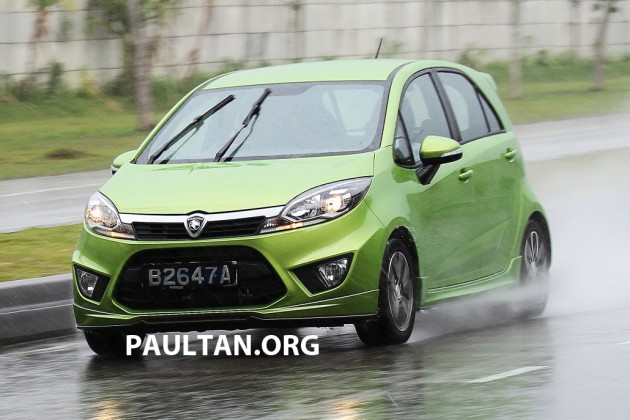
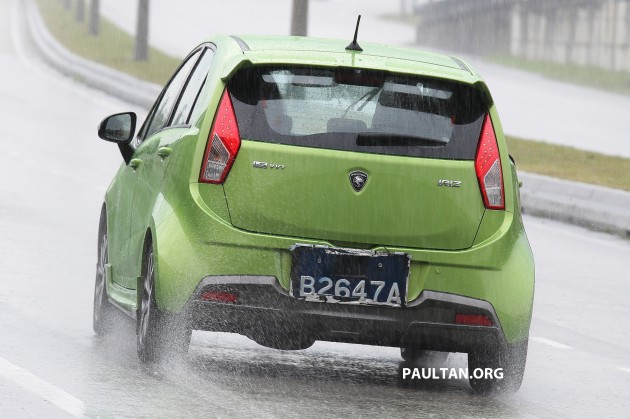
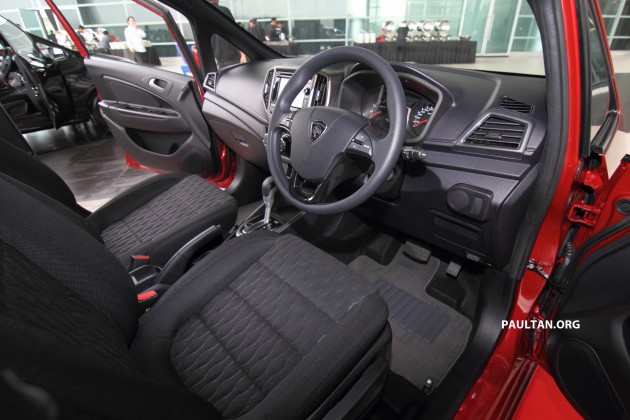
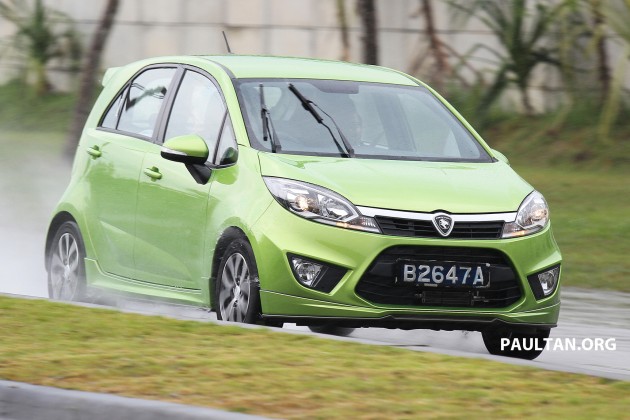
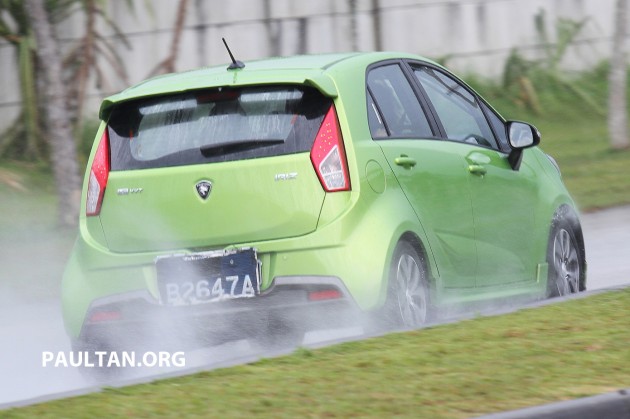
No comments:
Post a Comment